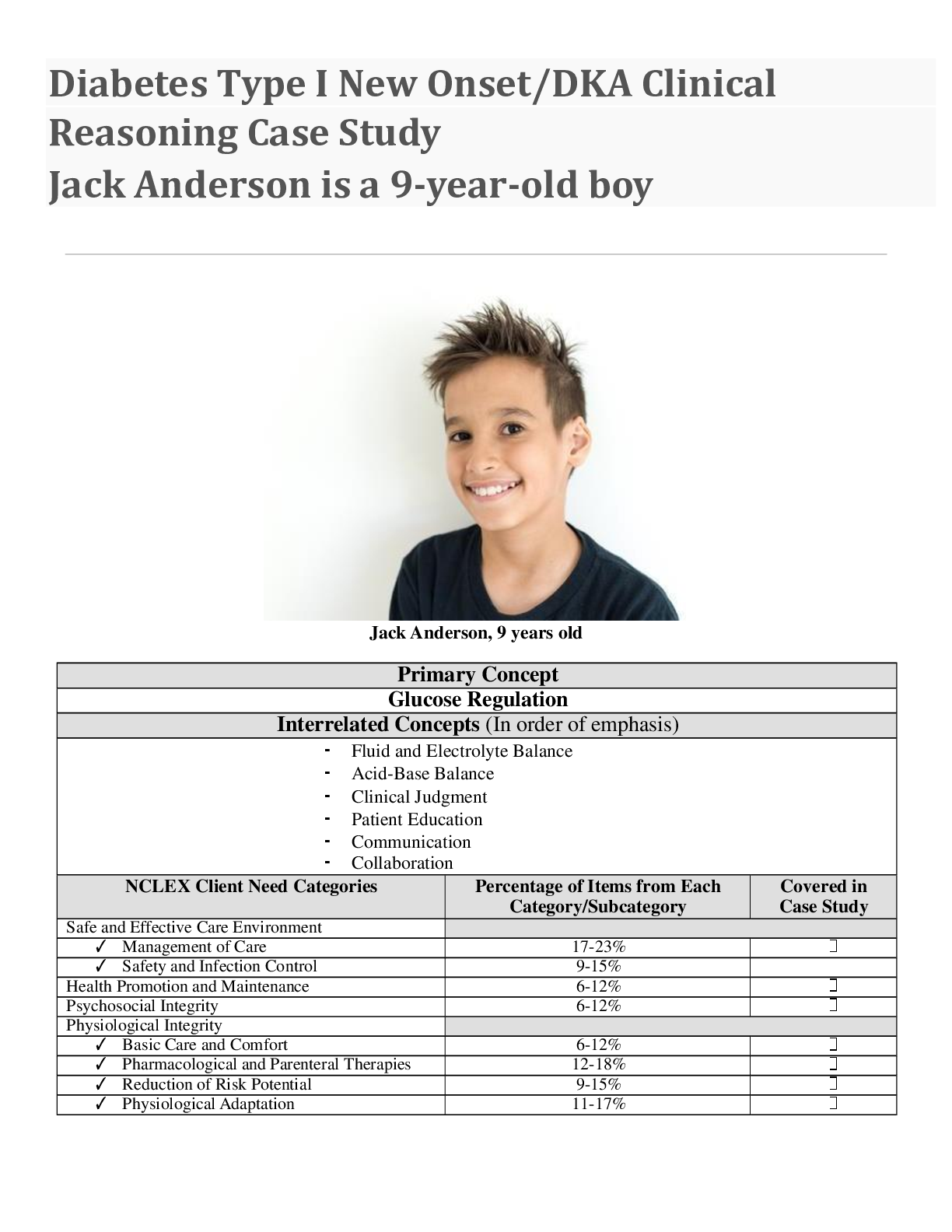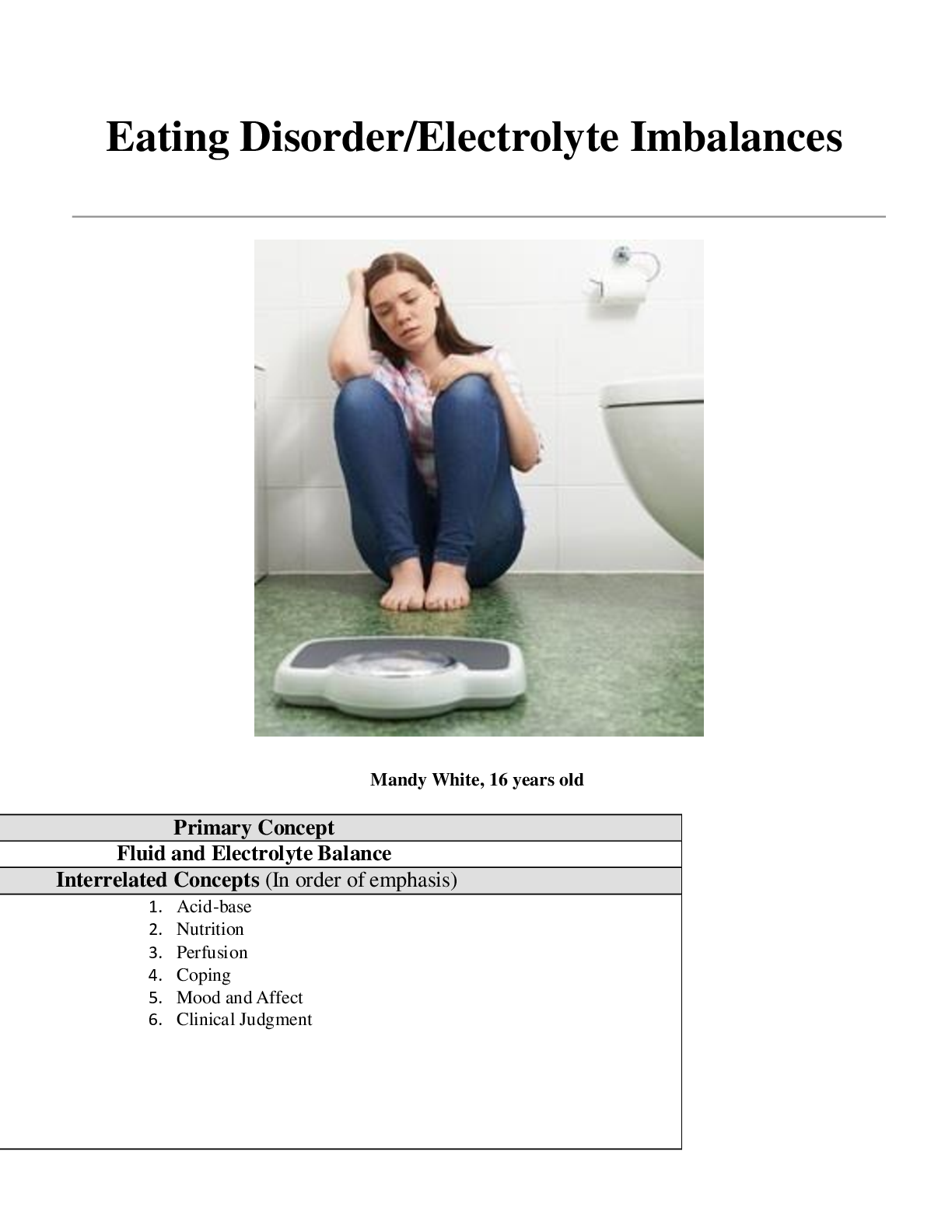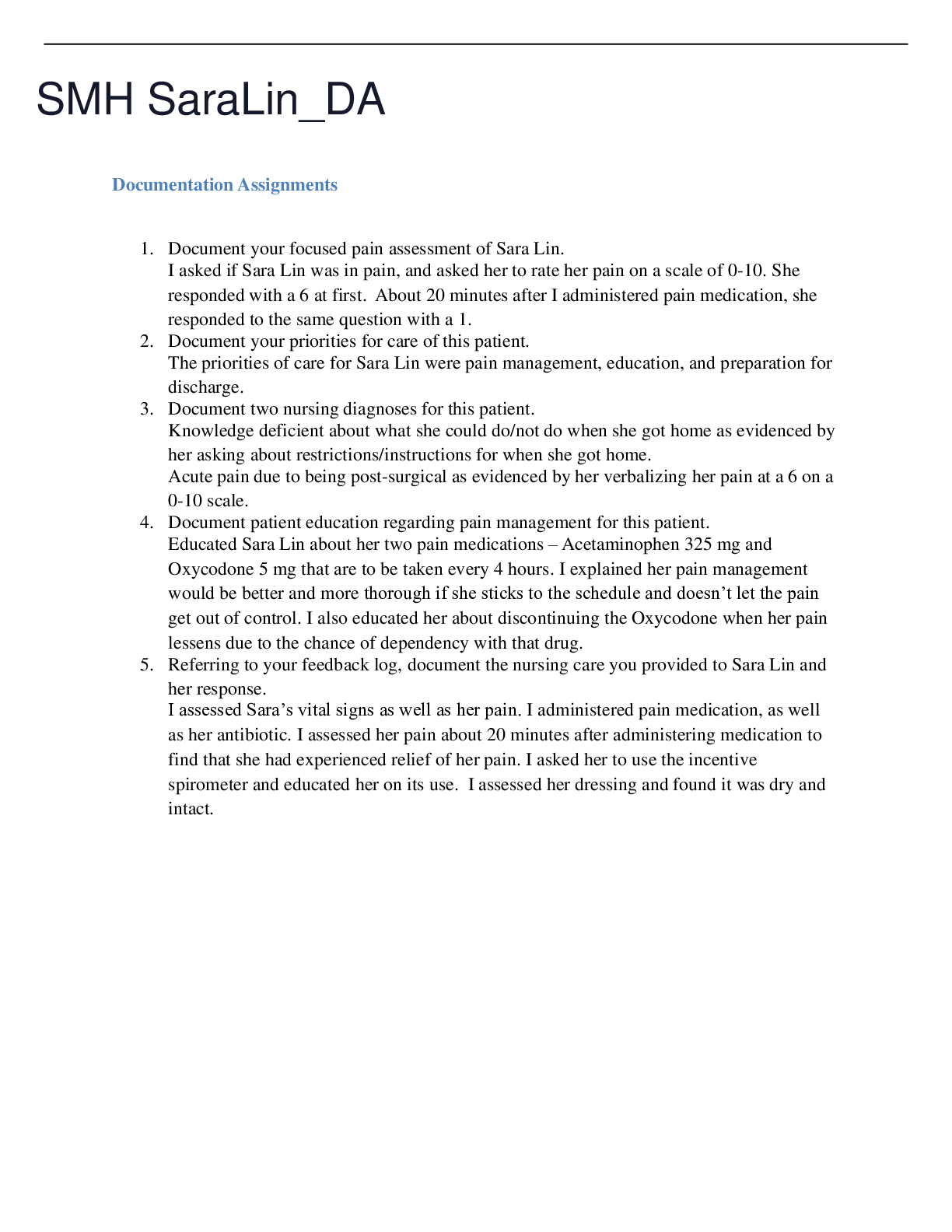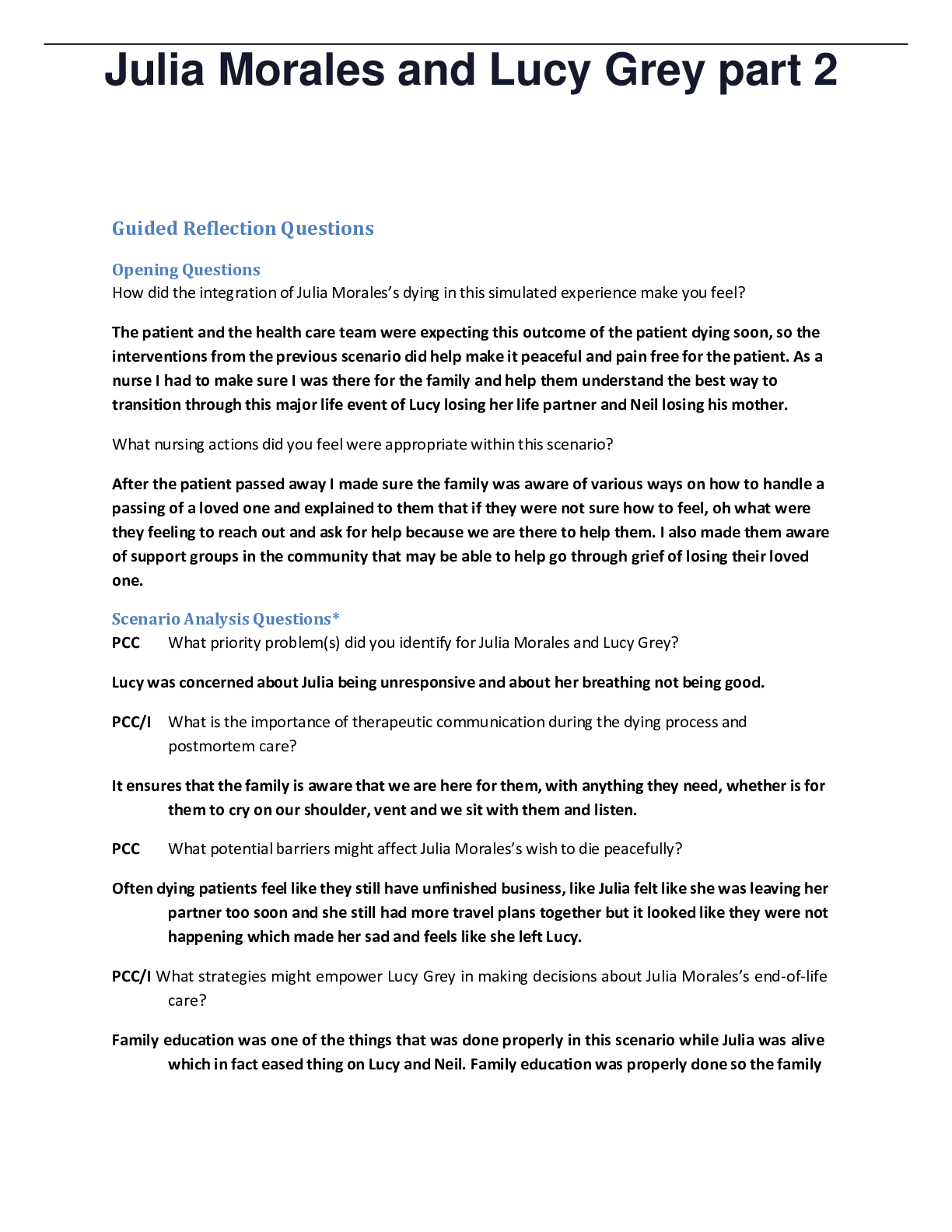Toua Xiong feedback log 100%.CORRECT WITH VERIFIED ANSWERS.
Document Content and Description Below
0:00 You arrived at the patient's side. 0:00 You reviewed the patient information. 0:00 You reviewed the patient log. 0:00 You reviewed the diagnostics. 0:00 You reviewed the clinical ob... servations. 0:00 You reviewed the MAR. 0:00 You reviewed the 12-lead ECG. 0:00 You reviewed the orders. 0:00 You reviewed the intake and output. 0:00 You introduced yourself. 0:04 You washed your hands. To maintain patient safety, it is important to wash your hands as soon as you enter the room. 0:10 Patient status - ECG: Sinus rhythm. Heart rate: 98. Pulse: Present. Blood pressure: 106/63 mm Hg. Respiration: 18. Conscious state: Appropriate. SpO2: 91%. Temp: 99 F (37 C) 0:39 You identified the patient. To maintain patient safety, it is important that you quickly identify the patient. 0:48 You asked if the patient was <Allergy>allergic<> to anything. (Out of breath) He replied: 'No, I am not allergic to anything.' 1:01 You asked the patient: What brings you here? (Out of breath) He replied: 'My throat and mouth have hurt so much these last few days. I can't eat or drink anything without pain. I am worried!' 1:10 Patient status - ECG: Sinus rhythm. Heart rate: 98. Pulse: Present. Blood pressure: 106/63 mm Hg. Respiration: 20. Conscious state: Appropriate. SpO2: 91%. Temp: 99 F (37 C) 1:31 You asked the patient when the symptoms started. (Out of breath) He replied: 'A few days ago I think.' 1:34 You asked the patient if he had any difficulty in breathing. (Out of breath) He replied: 'Yes' 1:38 You asked the patient what other symptoms he had. (Out of breath) He replied: 'I'm a bit short of breath. Why does my throat hurt, and what is that white stuff on my tongue? Is this normal?' 2:01 You examined the patient's chest. He is breathing at 22 breaths per minute. There are a few audible wheezes. The chest is moving equally. There is normal elasticity of the skin. His color is normal, and he is not sweating. 2:10 Patient status - ECG: Sinus rhythm. Heart rate: 98. Pulse: Present. Blood pressure: 104/63 mm Hg. Respiration: 22. Conscious state: Appropriate. SpO2: 92%. Temp: 99 F (37 C) 2:25 You assessed the patient's mouth. This was reasonable. 2:50 You listened to the lungs of the patient. There are a few audible wheezes. 3:08 You listened to the heart of the patient. This is reasonable. There were regular heart sounds without murmurs. 3:10 Patient status - ECG: Sinus rhythm. Heart rate: 97. Pulse: Present. Blood pressure: 103/62 mm Hg. Respiration: 23. Conscious state: Appropriate. SpO2: 92%. Temp: 99 F (37 C) 3:21 You checked the radial pulse. The pulse is strong, 100 per minute, and regular. It is correct to assess the patient's vital signs. 3:43 You measured the <Temperature>temperature<> in the ear. The temperature was 99 F (37 C). 4:03 You attached the automatic noninvasive blood pressure (NIBP) measurement cuff. This will allow you to reassess the patient continuously. 4:10 Patient status - ECG: Sinus rhythm. Heart rate: 97. Pulse: Present. Blood pressure: 102/61 mm Hg. Respiration: 24. Conscious state: Appropriate. SpO2: 92%. Temp: 99 F (37 C) 4:25 You asked the patient if he had any pain. (Out of breath) He replied: 'Yes! Ahh...' 4:28 You asked the patient if he could describe his pain. (Out of breath) He replied: 'It's in the back of my mouth. It really hurts when I swallow.' 4:35 You asked: How would you rate your pain? (Out of breath) He replied: 'It's pretty bad; I'd give it a 5. ' 4:56 You asked the patient when the pain started. (Out of breath) He replied: '4 days ago.' 4:59 You asked the patient if anything made the pain better. (Out of breath) He replied: 'No.' 5:07 You asked the patient if anything made the pain worse. (Out of breath) He replied: 'It gets worse when I try to eat something.' 5:10 Patient status - ECG: Sinus rhythm. Heart rate: 97. Pulse: Present. Blood pressure: 102/61 mm Hg. Respiration: 24. Conscious state: Appropriate. SpO2: 92%. Temp: 99 F (37 C) 5:29 You asked if the patient was <Allergy>allergic<> to anything. (Out of breath) He replied: 'No, I am not allergic to anything.' 5:32 You asked the patient if he had any medical problems. (Out of breath) He replied: 'Yes. I have COPD. It was diagnosed around 5 years ago.' 5:42 You asked the patient: Do you take any prescription medication? (Out of breath) He replied: 'I take Advair and Atrovent.' 5:44 You asked the patient: Do you take any over-the-counter or herbal medication? (Out of breath) He replied: 'No, I don't.' 5:45 You performed medication reconciliation. This was reasonable. 5:49 You asked the patient if he had taken his medication, if any. (Out of breath) He replied: 'Yeah. I got some a few hours ago.' 5:52 You asked the patient: When did you last take your medication? (Out of breath) He replied: 'About 4 hours ago.' 5:57 You asked the patient: How much medication did you take? (Out of breath) He replied: 'One puff of each.' 6:10 Patient status - ECG: Sinus rhythm. Heart rate: 97. Pulse: Present. Blood pressure: 101/61 mm Hg. Respiration: 24. Conscious state: Appropriate. SpO2: 92%. Temp: 99 F (37 C) 6:32 You phoned the provider in order to discuss the patient. 7:10 Patient status - ECG: Sinus rhythm. Heart rate: 97. Pulse: Present. Blood pressure: 102/61 mm Hg. Respiration: 24. Conscious state: Appropriate. SpO2: 92%. Temp: 99 F (37 C) 7:57 You performed mouth care on the patient. 8:10 Patient status - ECG: Sinus rhythm. Heart rate: 97. Pulse: Present. Blood pressure: 101/61 mm Hg. Respiration: 24. Conscious state: Appropriate. SpO2: 92%. Temp: 99 F (37 C) 8:35 You educated the patient about adverse effects of medication. 8:54 You educated the patient about proper use and care of inhalers. 9:10 Patient status - ECG: Sinus rhythm. Heart rate: 97. Pulse: Present. Blood pressure: 102/61 mm Hg. Respiration: 24. Conscious state: Appropriate. SpO2: 93%. Temp: 99 F (37 C) 9:15 You educated the patient about the drug nystatin. 10:10 Patient status - ECG: Sinus rhythm. Heart rate: 97. Pulse: Present. Blood pressure: 103/61 mm Hg. Respiration: 24. Conscious state: Appropriate. SpO2: 93%. Temp: 99 F (37 C) 11:10 Patient status - ECG: Sinus rhythm. Heart rate: 97. Pulse: Present. Blood pressure: 101/61 mm Hg. Respiration: 24. Conscious state: Appropriate. SpO2: 93%. Temp: 99 F (37 C) 1:19 You compared the medication label with MAR. This was reasonable. 11:34 You verified the nystatin dose with another nurse. This was not necessary here. 12:10 Patient status - ECG: Sinus rhythm. Heart rate: 97. Pulse: Present. Blood pressure: 103/61 mm Hg. Respiration: 24. Conscious state: Appropriate. SpO2: 93%. Temp: 99 F (37 C) 13:10 Patient status - ECG: Sinus rhythm. Heart rate: 96. Pulse: Present. Blood pressure: 100/60 mm Hg. Respiration: 24. Conscious state: Appropriate. SpO2: 93%. Temp: 99 F (37 C) 13:13 A 500000-U dose of nystatin was given orally. It is important to use the basic rights of medication administration to ensure proper drug therapy. This was indicated by order. 13:21 A patient handoff was performed. This scenario presents a 64-year-old male patient of Chinese descent, with a history of chronic obstructive pulmonary disease (COPD; emphysema), who arrives at the urgent care clinic after experiencing increased throat pain and difficulty swallowing for the past 3 days. In people with COPD, hypoxemia can develop rapidly with any type of infection and increase with anxiety or stressor physical exertion. In the late stages of COPD, dyspnea may be present even at rest. Oxygen therapy, medication, and lifestyle management are key factors to avoid exacerbations.[newline] [newline]Clinical signs of COPD and hypoxemia include chronic dyspnea, barrel chest, low oxygen saturation (despite the use of supplemental oxygen), chronic fatigue, poor appetite, and increased anxiety. [newline][newline]Oxygen delivered by nasal cannula is a commonly used medication in the management of COPD and in the outpatient (home) setting. Oxygen administration must be carefully monitored in patients with COPD. Most patients with COPD can easily tolerate 1-3 L/min of long- term oxygen therapy. Higher amounts of oxygen can cause adverse effects in patients with COPD.[newline][newline]Inhaled bronchodilators and corticosteroids are often used to manage COPD. Ongoing patient education about side effects and proper use of inhaled medications is indicated.[newline][newline]Common side effects of ipratropium inhalation include:[newline][newline]- Headache[newline]- Dry mouth[newline]- Hoarseness[newline]- Cough[newline]- Unpleasant taste[newline] [newline]Common side effects of fluticasone-salmeterol inhalation include:[newline] [newline]- Cough[newline]- Sinus irritation and congestion[newline]- Stuffy nose[newline]- Throat irritation[newline]Acute infections of the nose, throat, or sinuses and fungal yeast infection of the throat are common, yet severe, side effects of inhaled steroids and need to be treated immediately.[newline]Students are expected to obtain the history and perform a focused physical exam, including a respiratory assessment, assessment of the patient's oral cavity, and an assessment of the patient's pain level. In addition, the students should demonstrate the appropriate use and cleaning of a dry powder and aerosol inhaler and proper administration of a swish and swallow medication. You got 100% [Show More]
Last updated: 2 years ago
Preview 1 out of 4 pages

Buy this document to get the full access instantly
Instant Download Access after purchase
Buy NowInstant download
We Accept:

Reviews( 0 )
$14.00
Can't find what you want? Try our AI powered Search
Document information
Connected school, study & course
About the document
Uploaded On
May 13, 2021
Number of pages
4
Written in
Additional information
This document has been written for:
Uploaded
May 13, 2021
Downloads
0
Views
55


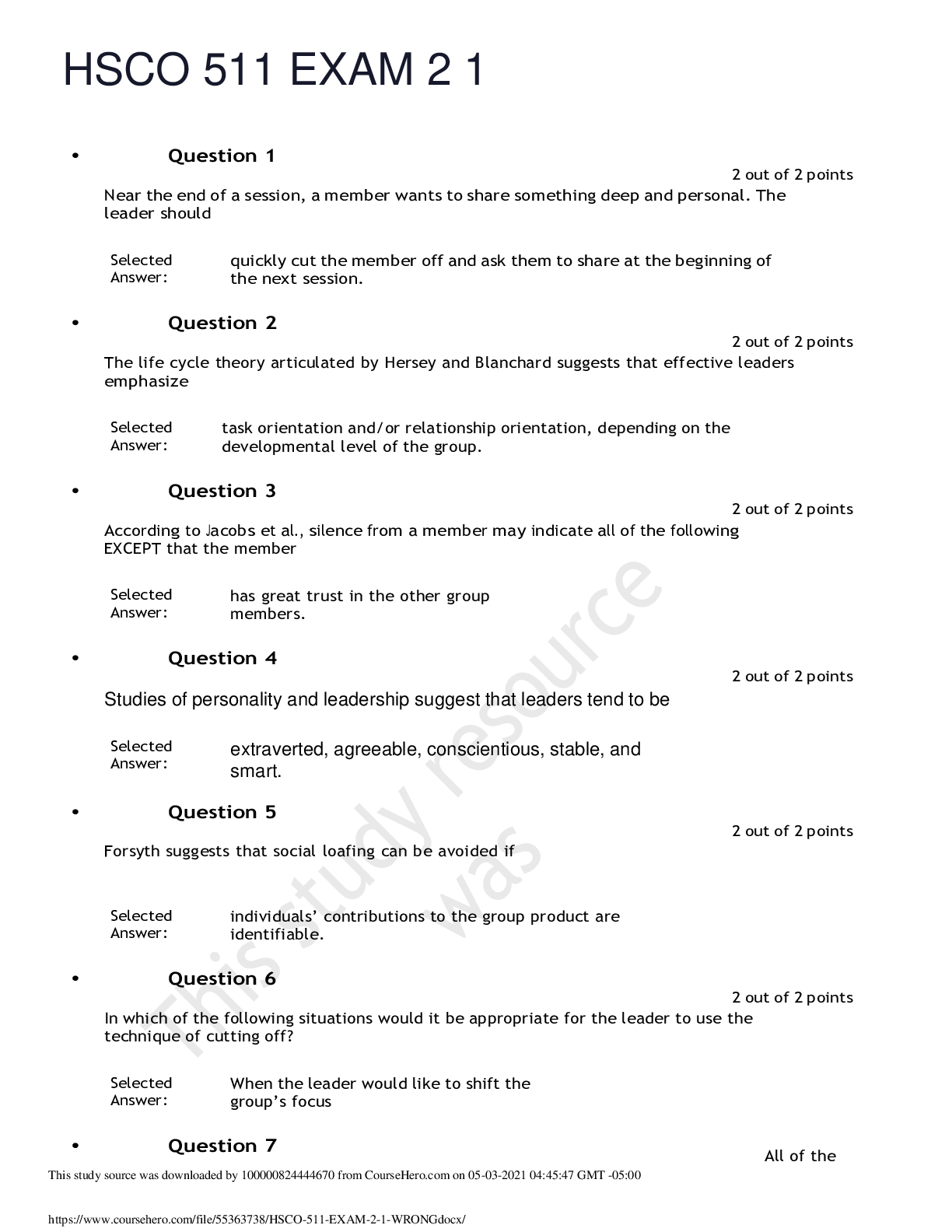


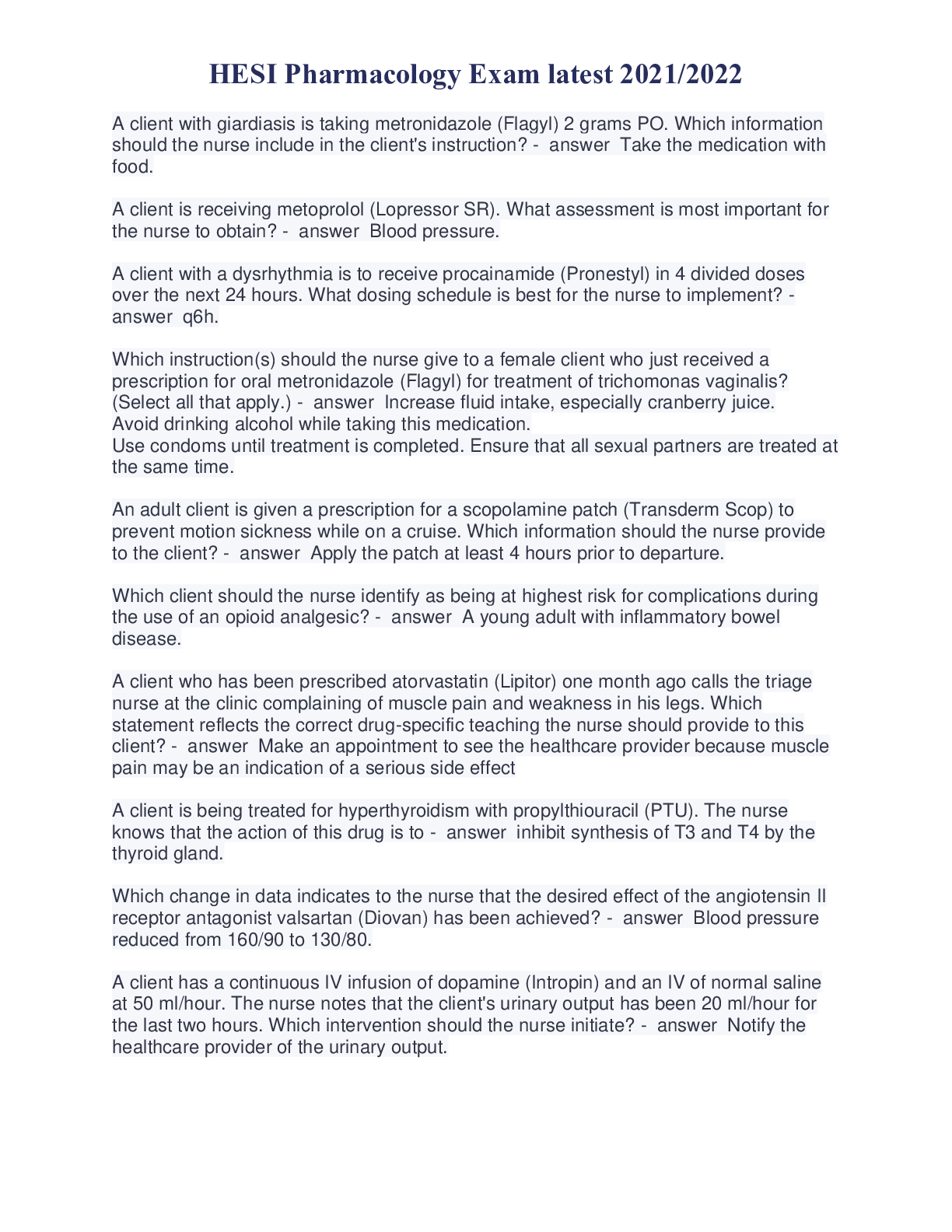
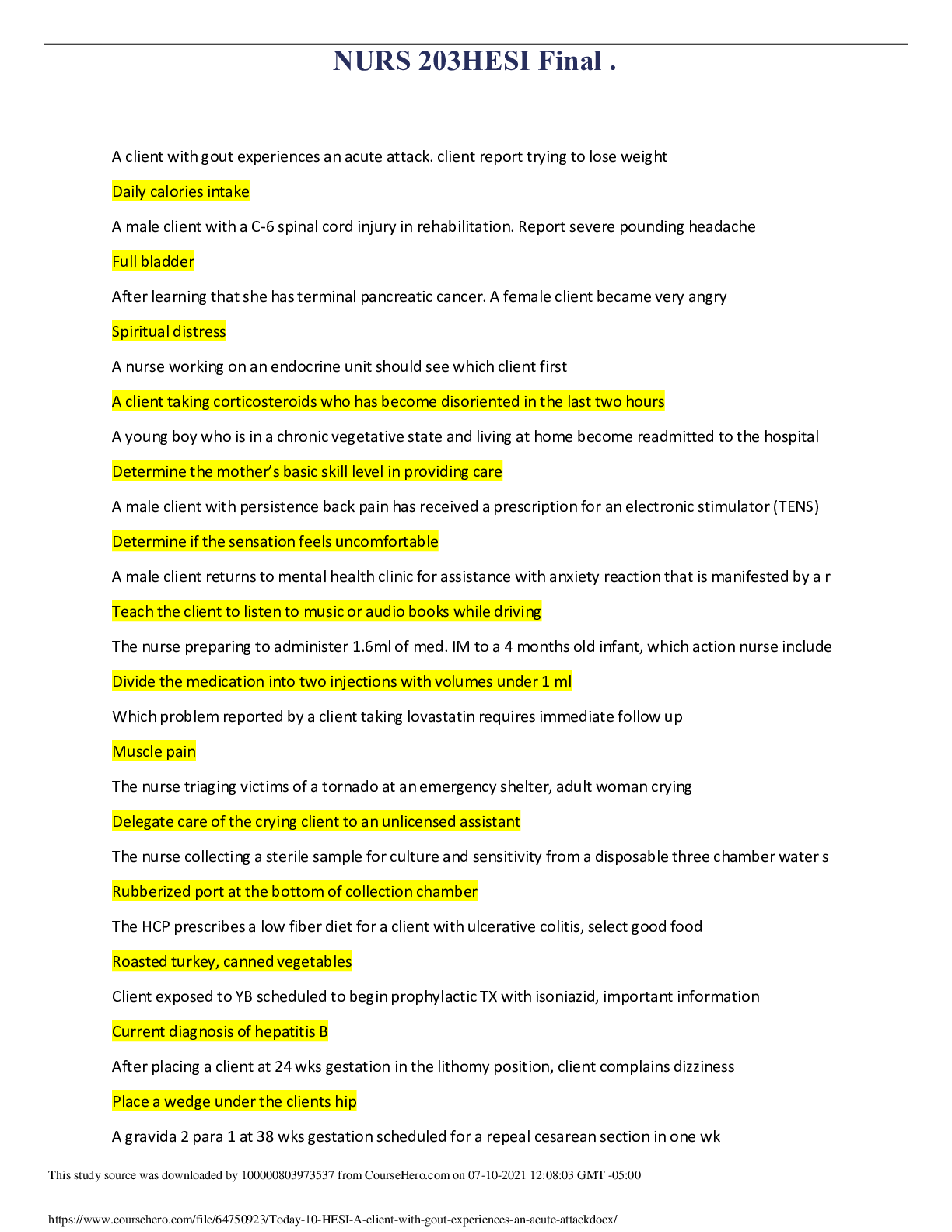



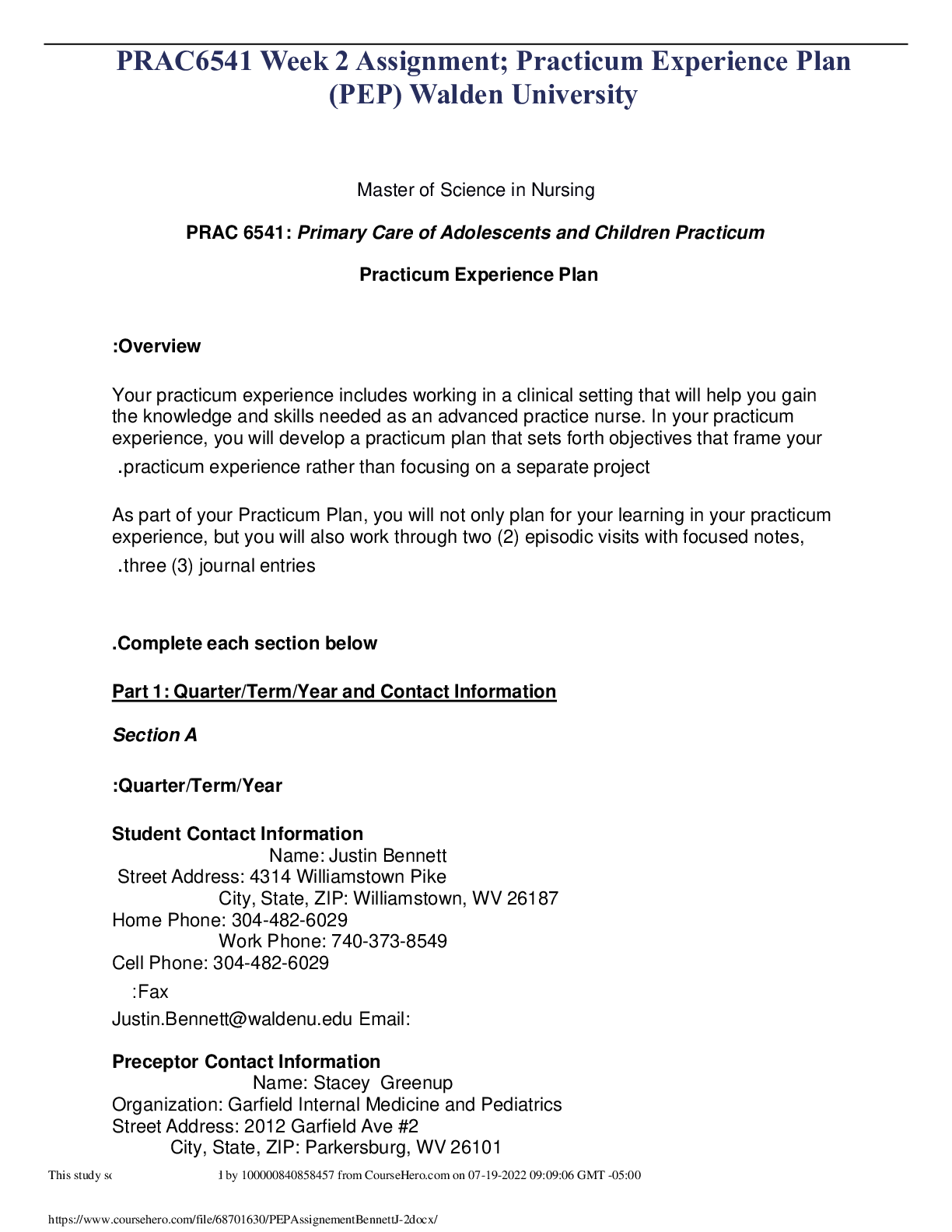
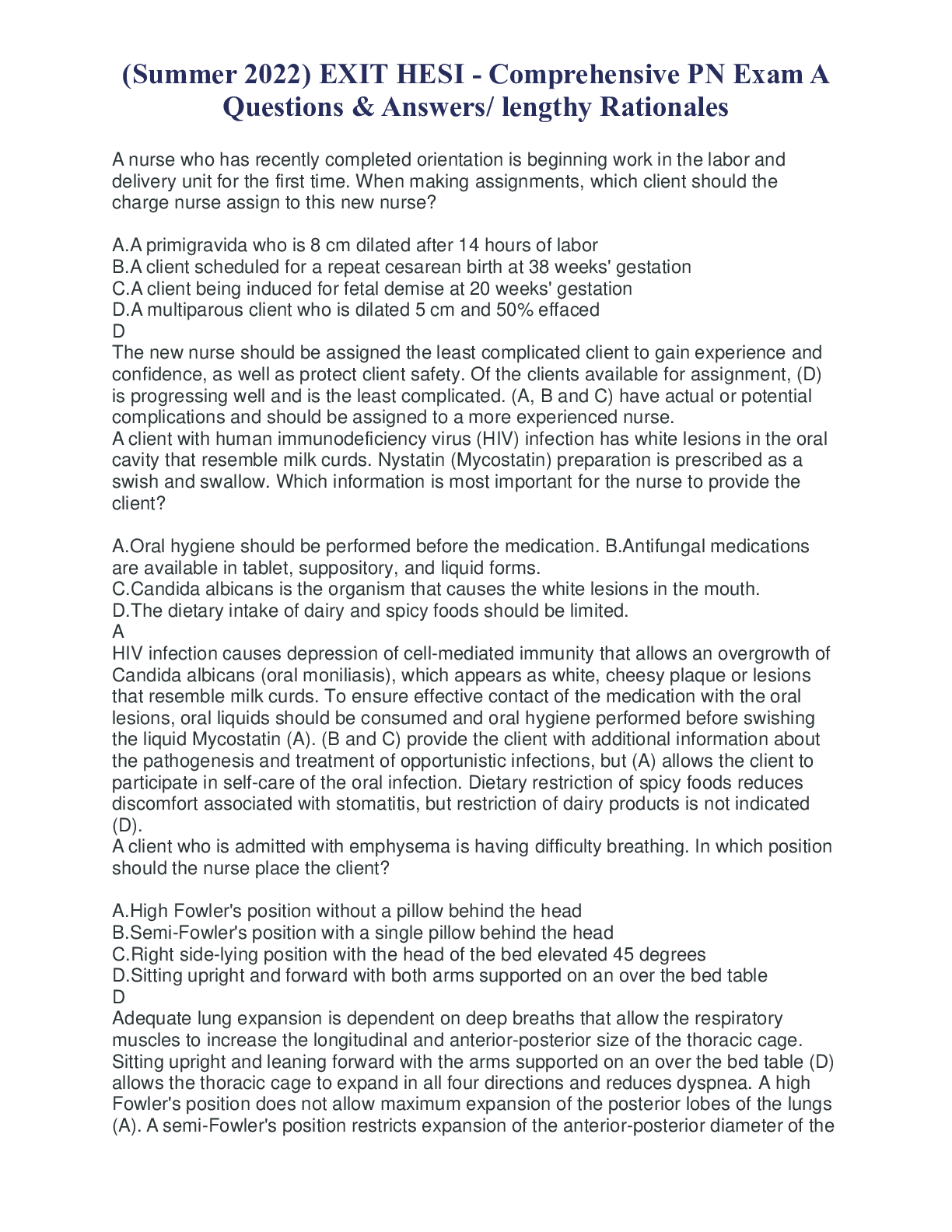
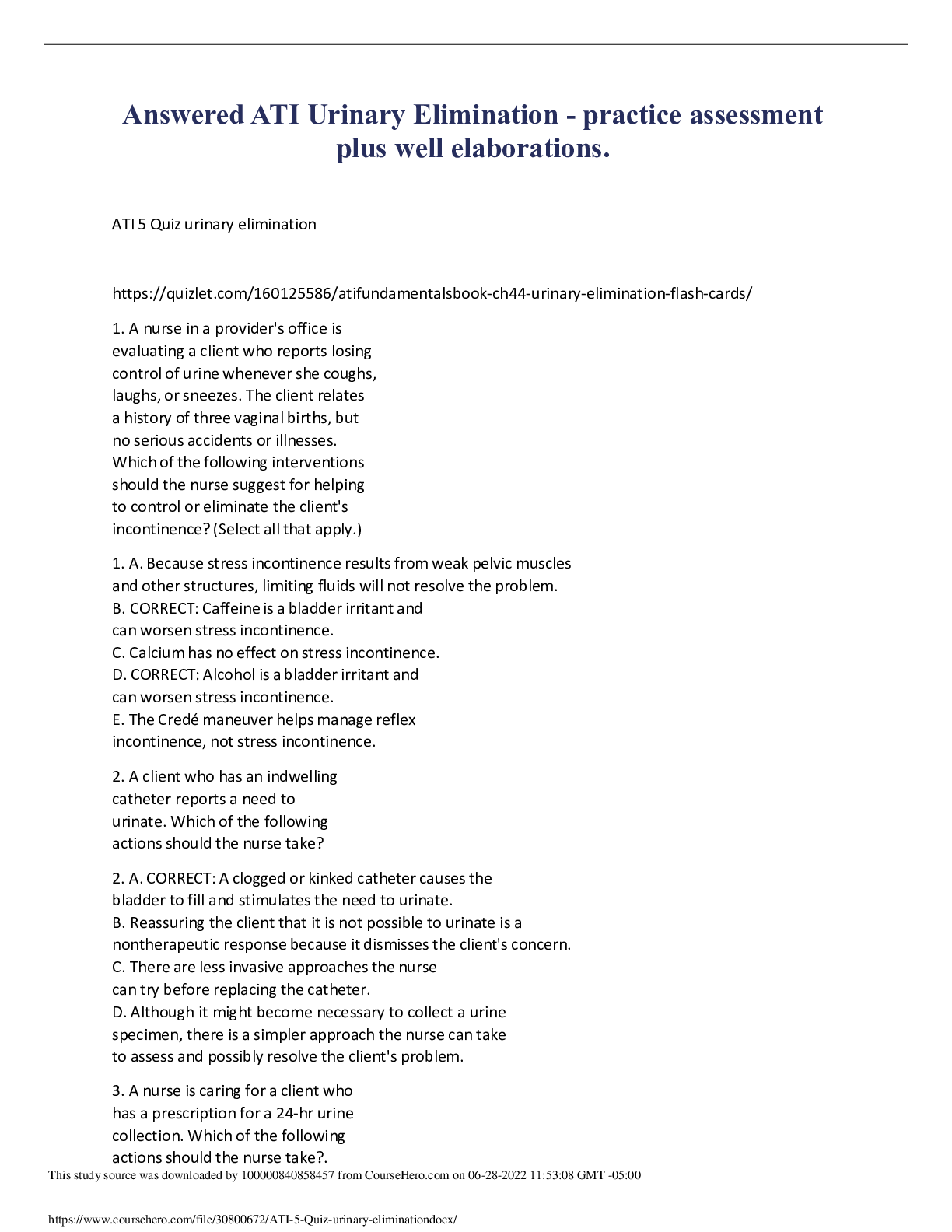
.png)


